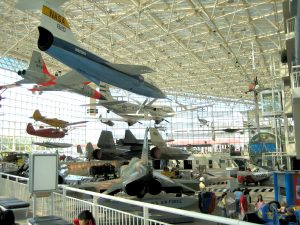
Seattle
Seattle is the largest city in both the state of Washington and the Pacific Northwest region of North America. The Seattle metropolitan area’s population is 4.02 million, making it the 15th-largest in the United States. The Seattle area was inhabited by Native Americans for at least 4,000 years before the first permanent European settlers. The Seattle area developed into a technology center from the 1980s onwards with companies like Microsoft, Amazon, and Alaska Airlines becoming established in the region. The culture of Seattle is heavily defined by its significant musical history, especially in the music genres of jazz, rock, and grunge bands.
Demographics:
Population
About 741,200 people as of 2020.
Walk-ability / Bike-ability
Walk Score of 74/100. Bike Score of 71/100 (according to Walkscore.com).
Home Ownership
44.9% homes are owner-occupied (according to Census data).
School District
Seattle Public Schools
Neighborhoods:
There are over 125 different neighborhoods in Seattle. For a full list and description of each, please see the Wikipedia page Seattle List of Districts and Neighborhoods.
Interesting Places To Visit:
Pike Place Market is one of the most tourist-heavy attractions in Seattle near the downtown waterfront and has been the go-to place for local produce. Today, you can find almost everything, from local artwork to vinyl records. The streets surrounding Pike Place Market are peppered with restaurants and coffee shops. The market is divided into two levels – street-level and underground which are open every day.

The Space Needle is one of Seattle’s most famous icons. The 605-foot-tall structure was built for the 1962 World’s Fair, and has dominated Seattle’s skyline ever since with its unique UFO-like design. The tower’s round observation deck (520-feet high) offers spectacular views of the city and the Cascade and Olympic mountain ranges. The Space Needle is part of the Seattle Center, an active civic, arts and family gathering place in the core of our region. More than 30 cultural, educational, sports and entertainment organizations that reside on the grounds, together with a broad range of public and community programs.

Seattle’s Waterfront is a glorious open-air promenade with many restaurants, hotels, and shops across nine historic piers. Anchoring the boardwalk is the Seattle Aquarium on Pier 59, Ivar’s Acres of Clams on Pier 54, the gondolas on The Seattle Great Wheel at end of Pier 57, and Ye Olde Curiosity Shop home there since 1899. You can spread out a picnic at Pier 62 or wander along the water up to Myrtle Edwards Park on Alaskan Way. The Seattle Waterfront is open daily and is an excellent place enjoy fresh, local shellfish like crabs, oysters, mussels, and clams.

At the Museum of Flight at Boeing Field, you can find out more about the city’s unique and fascinating history in aviation at one of its best museums. Seattle is one of the most important cities in the world of aviation and home to several facilities belonging to the Boeing Company. The museum is especially enticing for families with young children who can climb in and around various aircraft. One of the most popular attractions is the SAM 970, which served as Air Force One for presidents Eisenhower, Kennedy, Johnson and Nixon.

Woodland Park Zoo stretches across 92 acres and is home to more than 900 animals and 250 species, some of them endangered. Its exhibits include the African Savanna, featuring lions, giraffes, hippos and zebras; Tropical Asia, which includes orangutans, tigers, sloth bears and various birds; and the seasonal Molbak’s Butterfly Garden. The zoo also welcomes temporary exhibits like “Dinosaur Discovery,” which displays more than 20 full-size dinosaur replicas, including a 40-foot-long T. Rex. Woodland Park also houses several gorillas, including newborns.

The Ballard Locks are operated by the Army Corps of Engineers and allow boats to pass between Puget Sound and the Lake Washington Ship Canal. After you’ve watched a couple barges pass by, head to the south side of the locks where fish ladders help salmon migrate during the summer months; if you’re lucky, you might catch a glimpse of a sea lion looking for a quick bite to eat. The fish can be seen up close from special viewing windows. The Ballard Locks are also home to the Carl S. English Jr. Botanical Gardens, which feature a variety of 1,500 plants from around the world and beautiful views.

Gas Works Park contains remnants of the sole remaining coal gasification plant in the United States. The plant operated from 1906 to 1956 and was bought by the city of Seattle for use as a park in 1962 and opened to the public in 1975. The plant’s conversion into a park has a play area with a large play barn, and big hill popular for flying kites. Special park features include a sundial, and a beautiful view of Seattle.

Discovery Park is a 534 acre natural area and is the largest city park in Seattle. Situated on Magnolia Bluff overlooking Puget Sound, Discovery Park offers spectacular view of both the Cascade and the Olympic Mountain ranges. The secluded site includes two miles of protected tidal beaches as well as open meadow lands, dramatic sea cliffs, forest groves, active sand dunes, thickets and streams. Discovery Park provides an open space of quiet and tranquility away from the stress and activity of the city, a sanctuary for wildlife, as well as an outdoor classroom for people to learn about the natural world.

